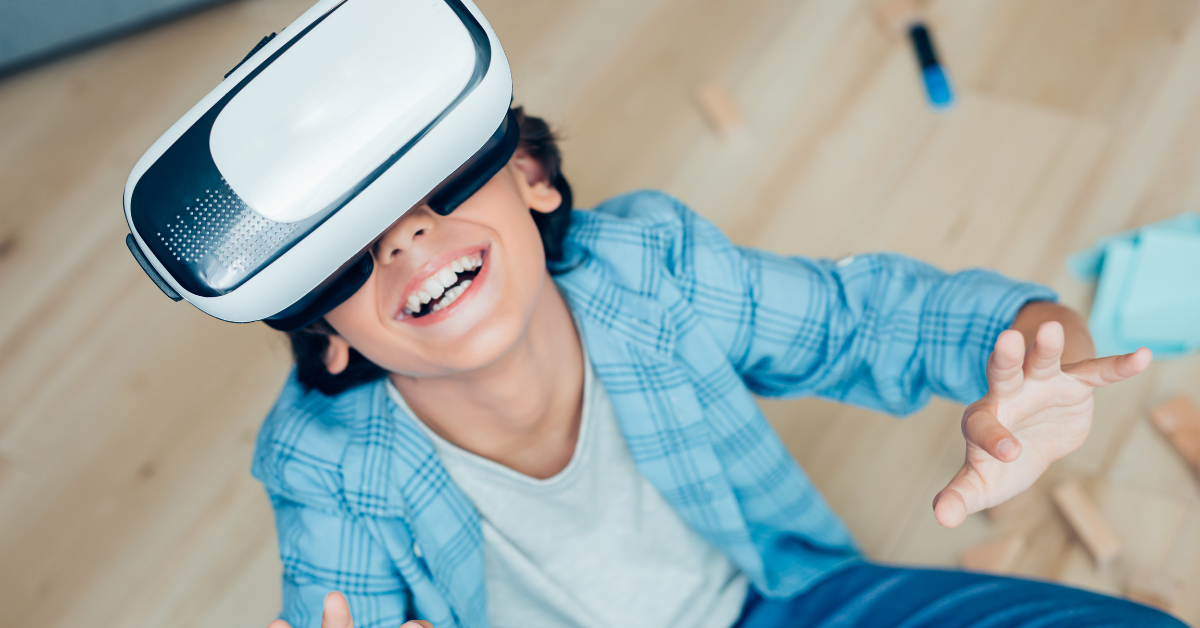
Need to Know
- Virtual reality (VR) is being used in education, and for good reason.
- VR can support retention, performance, and engagement.
- There are plenty of benefits for bringing VR into your classroom. Here are five.
A Closer Look
Education has seen an important shift in recent years—one that has transformed the role of the teacher from lecturer to learning guide. In essence, the way that we approach knowledge transfer has been turned on its head.
Today’s instructional practices are about facilitating experiences that make knowledge transfer faster, more efficient, and more authentic. As we move into the future, says Adobe, “Teachers will be focused on creating conditions for exploring, rather than providing ready-made knowledge.”
Virtual reality (VR) is gaining incredible momentum as a viable avenue for making these types of gains in the education space. In fact, research supports VR’s ability to enhance student engagement and achievement. Adobe continues, “VR education can transform the way educational content is delivered; it works on the premise of creating a virtual world — real or imagined — and allows users not only see it but also interact with it. Being immersed in what you’re learning motivates you to fully understand it.”
There are clear benefits to adding virtual reality to your students’ educational landscape. Notably, students:
Learn by Seeing
Scale and nuance don’t always come through when we see an image in a text (say, a tree frog or an Incan structure). Even watching a video can leave important details up for interpretation. VR for learning, on the other hand, lets students “see” a subject with multiple senses. Depth, perception, size, and detail become more evident, and these images become sealed in the student’s mind. “Educators have long used visual aids to help children understand complex concepts better,” says Gergana Mileva for AR Post. “But virtual reality takes this method several notches higher and optimizes the creative learning process.”
Learn by Doing
In traditional models, information is mostly shared via lecture or through reading. VR makes room for students to gain knowledge about a process by doing (not just reading about it). We know that when students become active participants in their learning, it is more likely to stick. What better way to learn about the life cycle of a butterfly than to be the butterfly? Or, how about walking through a VR frog dissection before slicing it open with a knife? VR opens doors to a whole world of interactive engagement.
Learn by Feeling
“VR has the potential to provide an entirely new perspective on people, places, and things.” (Makhdumi, 2017). We often talk to kids about about putting themselves in someone else’s shoes, and VR is one way to make this a very literal possibility. Purposeful applications like these can enhance critical SEL skills, like empathy. In fact, Louisiana State University suggests that ed-VR can boost students’ emotional responses to learning. Floreo, as one example, helps schools and parents capitalize on the possibilities of VR therapy. The platform leverages the power of virtual reality to provide a method of teaching social, behavioral, communication, and life skills for individuals with Autism Spectrum Disorder (ASD) and related diagnoses (Floreo, 2021).
Learn by Creating
We already know that multimodal engagement can be an incredibly powerful way for students to demonstrate understanding. Additionally, creative opportunities to express content knowledge can be culturally responsive and linguistically inclusive. Ed-based VR, in part, because of its immersive nature, has been shown to increase learner creativity and aid flow. Meanwhile, arts-centered VR experiences present learners with a virtually (pun intended) endless number of ways to demonstrate understanding.
Learn by Living
Virtual reality takes learners outside of their classroom. In fact, it can lead them outside of their community, their biome, or even their stratosphere (trips to the moon, anyone?). While we do our best to fill our students with knowledge and wisdom, many would agree that the most powerful lessons occur outside, in the real world. What if we could expose youth to these experiences while they are still under the protection, support, and counsel that is available to them within the school organism? When this is the case, we have an opportunity to debrief with students (arguably the most important part of a lesson). In this space, wonderings can be addressed and mistakes retaught.
Teaching and learning, as a whole, is only moving in the direction of more innovative means of knowledge transfer. We’d love to hear how you’re using VR in your school or classroom!


